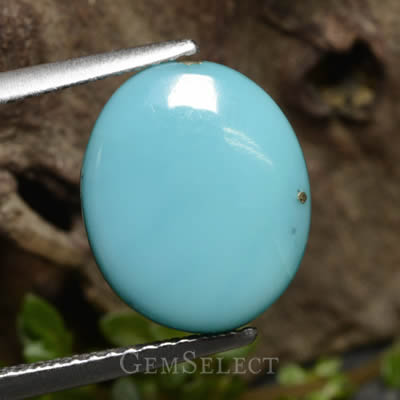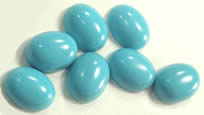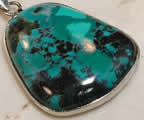Ancient Turquoise Gemstones

Introduction to Turquoise
Turquoise, with its vibrant blue-green hue, feels like a slice of the American Southwest, doesn’t it? It’s heavily associated with places like Arizona, New Mexico, Colorado, and Nevada, where it’s been a cornerstone of Native American jewelry for centuries. But let’s not limit its story to one continent - this gem has a global legacy that stretches back thousands of years. For a deeper dive into its origins and uses, explore our comprehensive turquoise guide.
Historical Significance
Turquoise isn’t just an American gem - it’s been cherished in Eastern cultures for millennia. Its name comes from the French "pierre turquoise," meaning "Turkish stone," because it reached Europe through trade routes in Asia Minor. The finest turquoise likely originated from ancient mines in Iran or Egypt before making its way to Turkey. In fact, Nishapur in Iran was the epicenter for top-quality turquoise, a prized trade commodity for early Persians. Archeologists have even found Persian turquoise in ancient graves across Turkistan and the Caucasus, dating back to the 1st to 3rd century A.D.

Alongside lapis lazuli, turquoise is one of the oldest gemstone materials known to humanity. Its iconic color is so distinct that we use "turquoise" to describe that perfect blend of blue and green in everyday language. Learn more about its unique green-blue shades in our guide to green turquoise.
Global Sources of Turquoise
While Iran’s turquoise has long been the gold standard, today this gem is mined worldwide, from Afghanistan to Argentina, Australia to Brazil, and even China, Israel, Egypt, Mexico, and Tanzania. The term "Persian turquoise" now refers to stones without the black or brown veining often seen in American turquoise, which is popular in Native American jewelry styles.

Physical Properties
Turquoise is a hydrous phosphate of copper, known for its opaque nature and blue-to-green color palette. It’s relatively soft, maxing out at 6 on the Mohs scale, but don’t let that fool you - it polishes beautifully. Some stones feature flecks of pyrite or dark, spidery limonite veining, adding to their unique character. Discover more about its semi-precious qualities in our semi-precious turquoise overview.

Turquoise Treatments
High-quality turquoise is rare, so the gemstone industry often enhances softer or more porous stones to meet demand. One common method involves impregnating the stone with hot acrylic resin, which boosts color, hardness, and durability. As long as these treatments are disclosed, they’re perfectly acceptable in the trade. It’s all about getting that stunning turquoise look without breaking the bank, right?
Color Preferences by Region
Turquoise’s beauty is in the eye of the beholder, and preferences vary globally. In the U.S., a vivid blue with minimal green is often prized, especially when it features a spiderweb matrix from the host rock. In contrast, Tibet favors a greener blue, while the Middle East prefers clear, vein-free stones. It’s fascinating how one gem can spark such different tastes!
Frequently Asked Questions
What is turquoise made of?
Turquoise is a hydrous phosphate of copper, often containing traces of aluminum. Its vibrant color comes from the copper content.
Where does the best turquoise come from?
Historically, the finest turquoise came from Nishapur, Iran, but high-quality stones are also found in places like Arizona, Egypt, and Mexico.
How can I tell if turquoise is treated?
Treated turquoise is often identified through gemological testing, using tools like magnification or spectroscopy to detect resin or other enhancements.
Is turquoise durable enough for everyday wear?
Turquoise is relatively soft (up to 6 on the Mohs scale), so it’s best suited for occasional wear or in protected settings like pendants or earrings.

